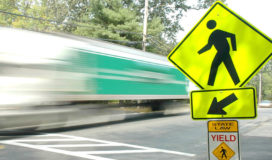California Trustee Duties and Responsibilities
A trust is an arrangement where a person, also known as a trustee, holds legal title to property belonging to another person, called a beneficiary. A living trust is simply a trust that a person creates when they are alive, rather than one that is created at their death under the terms of their will. Under the California trust law, the beneficiaries that a person names in their living trust are the ones to receive the trust property after the death of the owner.
When creating a California living trust, a person can maintain control of the entire process. As a grantor, a person decides whom to choose as a trustee. One can choose any person as a trustee and can even choose themselves, but they will need a successor trustee to manage the process after their death. A person can create a revocable living trust, one that can be altered or canceled by the individual at any time of their lives, or an irrevocable trust, one that is permanent.
The main advantage of creating a California living trust is that one can spare their family from the expense and delay of probate court proceedings after their death. The living trusts also protect a person during their lifetime should they become incapacitated and unable to manage their affairs.
California Trust Law requires a trustee to follow the terms of trust and follow the requirements of the California Probate Code for Trustee duties. Everything a trustee does must be done to benefit the trust beneficiaries and not harm them.
The California law gives several legal requirements for people who want to create a trust. For instance, there should be a manifestation of intent by the property owner, and the trust should not be created for an illegal purpose or for purposes that are against the public policy. Also, there must be a beneficiary.
A trust document is used to create the California living trusts. The document is a legal contract which sets up a trust and details how it will be run and distributed. A grantor signs the document in front of a notary. After signing the document, a person accepts to transfer ownership of the assets they would like in the trust and trust becomes functional.










